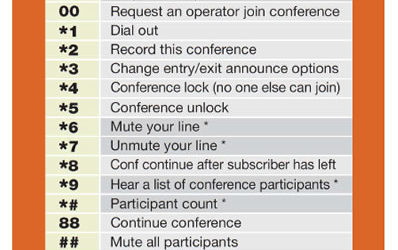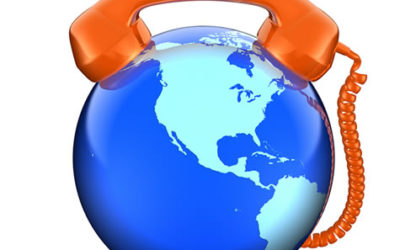The ultimate purpose to collaborate through meetings is to grow. To that end, we shared 3 Credos of effective collaboration through meetings and conferences: getting everyone’s best thinking, diversified perspectives, and being willing to adapt to changing conditions.
That’s not only a formula for personal, professional or business growth through collaboration; it’s an approach that can lead to creating a great action plan capable of moving your ideas forward – out of the meeting rooms and phone lines – into the real world.
Here’s a guide collaborators may find helpful for creating a great action plan.
Focus on what’s important right now.
Your mind and those of your team might be spinning out of control with worries about what lies ahead, or stressed over what went wrong in the past. You will undoubtedly be making a list of all the key actions and tasks required to make things happen. It’s critical, however, you focus on the here and now by asking a key question.
What is the essential, first step?
Boil it down to one thing, and let this be your trigger to what flows next. Think of it in terms of building a habit or establishing a routine. Michael Phelps began each race with the same exact routine before and during the 2008 Beijing Olympics, where he won a record eight gold medals. His starting point, his trigger, was to arrive two hours early for every race and follow a precise warm-up routine. Seems simple, but it worked for him and because of it he achieved greatness.
Likewise, your action plan should begin with the first, most important step from which the rest of your tasks will flow. Identify what that is, and no matter how difficult it seems, do it first.
Empower others to act with clarity of purpose.
A lack of understanding over what one’s contribution needs to be for the success of the action plan leads to confusion and sub-par performance. Empowered people, on the other hand, have clarity of purpose. They know the role they play and how valuable they are to the team. With clarity of purpose they’re empowered to act.
Author Greg McKeown talks about this in his book, Essentialism: The Disciplined Pursuit of Less, he writes, “When people don’t know what they are really responsible for and how they will be judged on their performance, when decisions either are or appear to be capricious, and when roles are ill-defined, it isn’t long before people either give up or, worse, become obsessed with trying to look busy and therefore important instead of actually getting any real work done.”
Ensure your action plan is specific with regards to the roles people are to play. Then empower them to act within the parameters of that role. Create a written action plan for all to see that clearly details accountabilities and who’s responsible for what.
Create some float time to prepare for the unexpected.
Your team collaboration will undoubtedly result in an action plan with due dates and deadlines. The default approach when setting these is to be aggressive, often with a best case scenario mind set. Good collaborators are high achievers, and they don’t like wasting any time getting things done. That’s a mistake you’ll want to avoid at all costs.
A colleague told of a time he was giving his wife a ride to the San Francisco International Airport. Normally, he wasn’t too excited about making the 50 minute trip (his wife thought it took 45 minutes), but this time it was different.
Workers had just completed construction of the new, $6.4 billion eastern span of the Bay Bridge, and they were both looking forward to crossing it for the first time. All went well until the unexpected happened.
A driver got out of his vehicle at the toll plaza to retrieve an errantly tossed coin, and got hit by a passing vehicle. The injury shut down all lanes of traffic going onto the bridge – for hours. The couple had no choice but to wait in traffic until they could exit and then detour to the nearest BART station. She just barely made her flight.
While they collaborated on their departure time, they failed to calculate in the unexpected.
Good collaborators come to consensus and agreement on the timing of things. Great collaborators, however, build in some buffer or float time that prepares for the unexpected, and sets them up for certain success in achieving their goals within a reasonable and more realistic time frame.
“Plans are worthless, but planning is everything.”
– Dwight D. Eisenhower
In this case, planning for the unexpected is everything to the success of your endeavor.
Collaborate on all of the unexpected issues that could possibly occur to keep you from achieving success in a timely manner. Have a brainstorming session and invite everyone’s thinking on this. Be ready to adapt to changing conditions, and have contingencies identified – as part of your detailed action plan.
If your team is stuck on coming up with a list of unexpected issues that can sabotage your project, take the suggestion McKeown offers in Essentialism, “Add a 50 percent buffer to the amount of time (you) estimate it will take to compete a task or project.”
Going from Good to Great Collaboration
The specific action plan you create as a result of your teams’ collaboration in meetings and conferences can help take your project or business objective from good to great. Great collaborators build action plans that…
- tackle the most important thing first,
- empower everyone with extreme clarity of purpose, and
- prepare for the unexpected with ample float time.
Add these ingredients the next time you collaborate with others on a business objective and see what you can do to create or change something to a greater level of accomplishment, and growth.





0 Comments